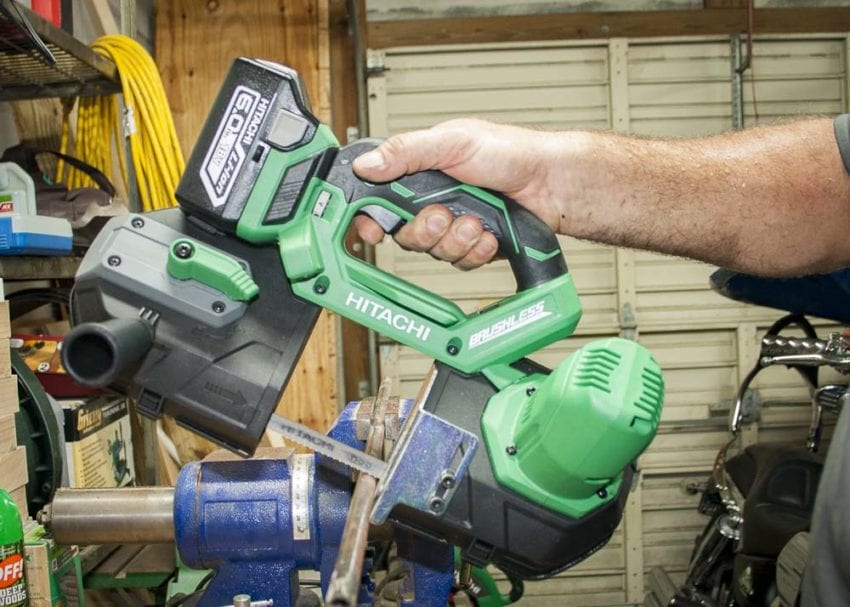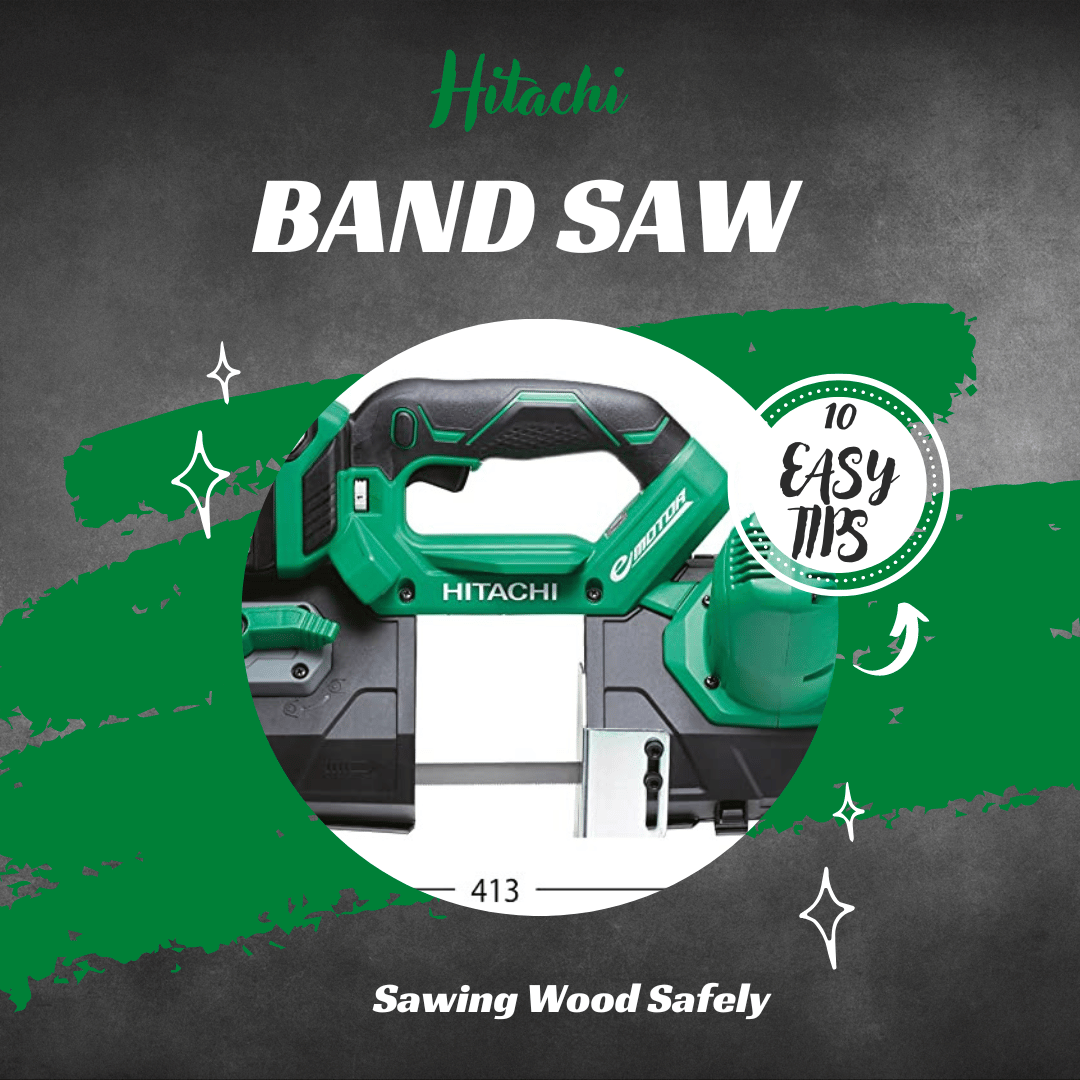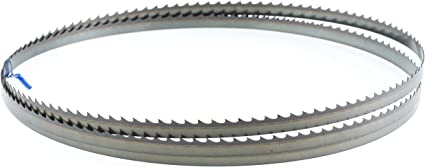If you've ever used a band saw before, you know it can be intimidating. The blades are sharp and the saw moves fast, which can make it easy to make mistakes that can lead to injury. But don't worry! With a little bit of knowledge and practice, anyone can use a band saw safely and efficiently. Here are 10 easy tips for safely sawing wood with your Hitachi Band Saw.
1. Read the Manual:
Before using your band saw for the first time, read through the manual that came with it to familiarize yourself with its components and how to operate it safely. Knowing how to adjust the blade tension properly is key to avoiding mishaps.
2. Wear Protective Gear:
Always wear protective gear when operating a band saw, such as safety glasses, gloves, and closed-toe shoes. You never want to expose yourself to potential flying debris or sharp edges while working with power tools like these.
3. Check the Blade Tension:
Before each use of the band saw, check that the blade tension is correct for what you’re cutting – if it’s too loose or too tight, your cuts won’t be accurate or safe!
4. Use Stable Support:
If you’re cutting larger pieces of wood (like logs), make sure they are securely held in place on a stable surface that won’t move around during use – this will help ensure accuracy and safety throughout your project.
5. Secure Your Workpiece:
Make sure your workpiece is secured firmly before beginning any cut; this will help keep it in place while also protecting against kickback (which is when the material being cut suddenly jumps back towards you). You should also avoid any overhanging pieces of wood while making cuts as they could cause kickback as well.
6. Start Slow:
When starting a cut on your workpiece, always start slowly rather than going full speed right away - this will help ensure accuracy as well as safety during operation of the tool!
7. Check Clearance:
Make sure there is enough clearance between your workpiece and other parts of the machine - if not, there could be interference which could lead to an unsafe situation or dangerous kickbacks from hitting something else in the process!
8. Push Evenly :
When pushing through your cuts with either hand on either side of the blade guard , make sure both hands are pushing evenly instead of one hand pulling while another is pushing - this will help keep everything in line and prevent any uneven forces or dangerous situations from occurring during operation .
9. Follow Proper Maintenance Practices :
To keep your Hitachi Band Saw running smoothly , follow proper maintenance practices such as regularly cleaning & lubricating all moving parts , checking blades for wear & tear , replacing broken guards etc . Doing so will help ensure maximum efficiency and safety for years to come !
10. Turn Off Power Source After Every Use :
Last but not least , always remember to turn off power source after every use . This is essential for preventing accidental starts which could potentially lead to accidents or injuries .
Conclusion: The most important thing about using a band saw safely is having knowledge about how it works and taking precautions before each use—like wearing protective gear and checking blade tension—so that you don’t get hurt in an accident due to lack of preparation or experience! With these 10 easy tips for safely sawing wood with your Hitachi Band Saw checked off, you're one step closer towards becoming an expert at using this powerful tool! Stay safe out there!

FAQs
1. What are the basic principles of sawing wood safely with a Hitachi band saw?
The Hitachi band saw is one of the most versatile saws on the market. To ensure safe use of this saw, it's important to follow a few basic principles. First, always wear protective eyewear and hearing protection—even light-duty cuts have the potential to send flying debris towards your face and eyes, or create unexpected loud noises. Additionally, be sure that whatever you are cutting is properly secured in a vice so as not to leave your hands anywhere near the cutting blades. Before turning on the Hitachi band saw, make sure that all available guards are in place and working properly—this will help reduce any injury risk should something go wrong. Finally, because of how quickly a Hitachi bandsaw can cut through wood, it’s important to go slow when approaching the end of a cut in order to avoid kickback. Following these principles will greatly increase safety while sawing with a Hitachi band saw.
2. What are some of the most important safety considerations when using a band saw?
Using a band saw can open up a range of possibilities, especially in carpentry and other DIY projects. However, due to its nature and the tools involved, it is also important to exercise extreme caution during any endeavor that involves a band saw. Some of the most important safety considerations are wearing safety glasses or goggles, ensuring the proper fit for your body - such as standing far enough away from the blade so your arms can extend comfortably - and keeping a firm grip on your material while cutting. Additionally, it is important to check for damaged blades or missing parts before using any type of saw. Lastly, be sure to use push sticks when needed should you need to make small adjustments on material close to the blade. Keeping these safety tips in mind is essential so you can properly and safely enjoy exercising your creativity with a band saw.
3. How can I avoid kickback when using a band saw?
Working with a band saw presents the potential for kickback, which is when the material that is being cut binds to the saw blade and is thrown in an unpredictable direction. To help minimize this risk, make sure to always use steady and consistent pressure when feeding materials into the saw, never force it or rush movements. Additionally, nail-embedded wood should be avoided as it carries a heightened risk of binding and kickbacks. Lastly, make sure that your saw remains in good condition with proper tensioning of the blade; loose blades increase the chances of kickback. By following these precautions, you can ensure a safe cutting experience while using a band saw.
4. What are some of the best ways to hold a piece of wood when using a band saw?
When using a band saw, careful and secure handling of the wood is essential to ensure both safety and a successful end product. Holding the piece firmly with both hands, one near the blade and one closer to you, provides stability and control. Additionally, angling the front hand slightly so that your fingers are pointing toward your body allows for even more control. When making curved cuts, holding onto the back-end of the wood may be necessary. And when having to quickly let go of the wood during any part of the cutting process, make sure you back away from the blade quickly to avoid any potential danger. By following these simple steps your projects will look amazing every time!
5. How can I avoid binding when using a band saw?
Using a band saw couldn't be simpler, but without taking the right care, you could easily find yourself in trouble. The most common problem is binding, which happens when your wood gets stuck or jammed in the blade while you are using it. To avoid this annoying setback and preserve the condition of both your project and shop tool, there are several simple steps you can take: make sure that your stock is firmly secured and held tight against the fence; use blades specifically suited for the material you're cutting; adjust tension properly; and ensure that your blades are clean and sharp. Taking these precautions will help every time you slice through some wood with a band saw.
6. What are some of the best ways to support a piece of wood when using a band saw?
Working with a band saw requires the use of a steady support underneath the piece to be cut. Doing so helps ensure smoother cuts and reduces the risk of injury due to vibration or tension on the blade. Clamps, vises and bolts can all be used to secure the wood firmly and properly during cutting with a band saw, but there are a few other methods one should consider as well. Making use of specialized supports – such as cross-cut sleds or feather boards – is often more effective for projects involving detailed cuts and intricate shapes. These devices help to hold the material itself in place in addition to keeping it level and stable, further minimizing any potential risks that come from using a band saw.
7. What are some of the best ways to cut a curve with a band saw?
Band saws are an incredibly versatile, powerful and precise tool that can be used to make curved cuts. When cutting a curve with a band saw, there are a few key steps to ensure the highest level of precision and safety. First, it’s important to adjust the blade guide support roller so the blade is at the highest tension possible for optimal cutting performance. Secondly, double-check that the blade speed matches your material type for maximum efficiency. Thirdly, draw your cut outline directly onto the material with a pencil or permanent marker for easy reference when making your cuts. Finally, adjust your cutting speed based on the width of your project's curves - a fast speed should be used for wide curves and slower speeds should be used for thin sections. Following these steps will help you achieve the best results when using your band saw to cut curves in any project!
8. What are some of the best ways to cut a straight line with a band saw?
When using a band saw to achieve straight lines, accuracy and precision are key. Even the slightest wobble can lead to minor deviations, so it is important to take the time to set the piece up correctly. Firstly, position the material in such a way that it is level and limited movement throughout the cut. Secondly, be sure to tighten all screws and clamps securely to ensure that your work piece won’t move or get crooked. Finally, start by taking slow passes with modest tension on the blade - as you become more comfortable with the saw and cutting technique you can increase pressure on subsequent passes. Doing this will ensure that you can make perfectly straight cuts with your band saw every time!
9. What are some of the best ways to finish a cut with a band saw?
The band saw offers a degree of accuracy and cleanliness that is hard to find in other woodworking tools, especially when it comes to cutting curves and complex shapes. However, having the right technique can make all the difference when it comes to getting a crisp and perfect finish on these cuts. One great way to finish with the band saw is created a shallow plunge cut near the end of the cut, allowing for cleaner waste removal. Turning down the blade tension or raising blade guides when starting a cut is another useful tip, as this will help prevent any kickback as you get closer to completing your line. Finally, using multiple light passes and using sandpaper or emery cloth for fine-tuning are all helpful ways increase your success rate when working with a band saw.
10. What are some of the best ways to clean and maintain a band saw?
When it comes to cleaning and maintaining a band saw, the best way is to keep a regular maintenance schedule. This involves checking for loose parts, inspecting belts for fraying or worn areas, wiping down surfaces with a damp cloth, making sure any bearings are properly lubricated, and frequently replacing items such as tires and blades. Doing this routinely will ensure your saw is always in optimal condition and will help you get the most out of it during regular use. Additionally, following safety recommendations always applies when operating any kind of power tool - before doing anything else make sure that you stop the chopping action of the blade and unplug the saw from its power source. With these practices in place your saw will remain clean and well-maintained no matter how often it's needed.




